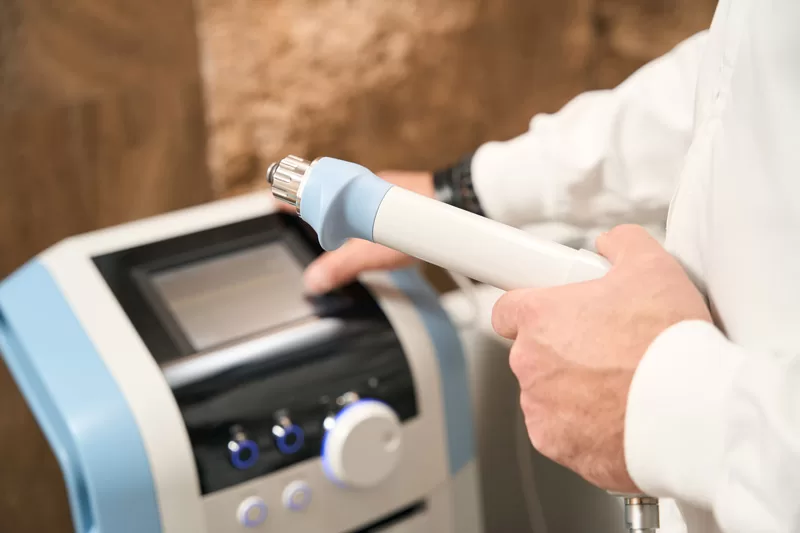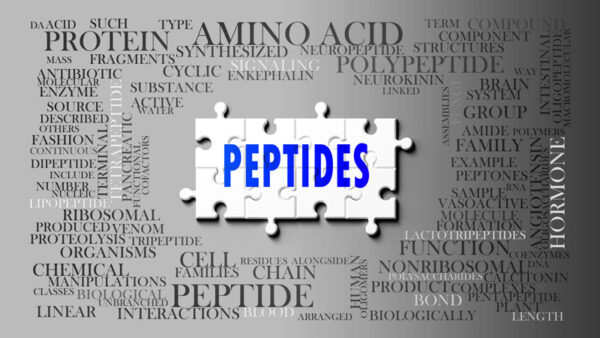In today’s modern medicine, innovative treatments are constantly emerging, providing hope and relief to individuals with various health conditions. Acoustic Wave Therapy (AWT) and Shockwave Therapy (SWT) have gained popularity for their effectiveness in addressing a wide array of medical issues. This article will examine the benefits of AWT and SWT while highlighting the key distinctions between these two treatment options.
Part I: Acoustic Wave Therapy (AWT)
Acoustic Wave Therapy, also known as Acoustic Wave Regenerative Therapy, is a non-invasive medical procedure that employs high-frequency sound waves to stimulate the body’s natural healing processes. Originally developed for the treatment of kidney stones, AWT has found its application in various medical fields due to its remarkable benefits.
- Erectile Dysfunction Treatment: One of the most well-known applications of AWT is in the treatment of erectile dysfunction (ED). AWT can improve blood flow to the penis by breaking up plaque in blood vessels and stimulating the growth of new blood vessels. This results in improved sexual function for many men, offering a non-pharmaceutical alternative to ED medication.
- Pain Management: AWT has been proven effective in managing chronic pain conditions such as plantar fasciitis, tendinitis, and tennis elbow. By targeting the source of the pain and promoting tissue repair, AWT can alleviate discomfort and improve the quality of life for patients suffering from these conditions.
- Cellulite Reduction and Skin Tightening: Aesthetic medicine has also embraced AWT for its ability to reduce cellulite and tighten sagging skin. By breaking down fat cells and stimulating collagen production, AWT can lead to smoother, firmer skin.
- Improved Circulation: AWT promotes better blood circulation, which can have positive effects on various health issues, including wound healing and muscle recovery.
Part II: Shockwave Therapy (SWT)
Shockwave Therapy, on the other hand, is a medical procedure that utilizes high-energy acoustic waves to target specific areas of the body. SWT has been widely used for musculoskeletal conditions and is often referred to as Extracorporeal Shock Wave Therapy (ESWT).
- Musculoskeletal Pain Relief: SWT is highly effective in the treatment of musculoskeletal pain conditions, such as chronic back pain, calcific shoulder tendinitis, and heel spurs. The high-energy shockwaves can break down calcifications and stimulate tissue regeneration, leading to pain relief and improved mobility.
- Orthopedic Applications: Orthopedic surgeons often employ SWT to treat conditions like non-union fractures and avascular necrosis. The therapy accelerates the healing process and promotes the formation of new bone tissue.
- Plantar Fasciitis: Plantar fasciitis, a common cause of heel pain, can be successfully treated with SWT. The shockwaves stimulate tissue repair and reduce inflammation, providing relief to sufferers.
- Sports Injuries: Athletes benefit from SWT as it speeds up the healing of sports-related injuries such as tennis elbow, Achilles tendinopathy, and shin splints. This allows athletes to return to their respective sports more quickly.
Part III: Key Differences
While both AWT and SWT utilize acoustic waves, they differ in several crucial aspects:
- Energy Levels: The most significant difference between the two therapies is the energy level of the acoustic waves. AWT uses lower-energy waves that are less focused and spread out over a larger area, making it suitable for softer tissues and less severe conditions. SWT, on the other hand, employs high-energy waves that are highly focused on a specific target area, making it more suitable for musculoskeletal and orthopedic issues.
- Applications: AWT has a broader range of applications, including erectile dysfunction treatment, cellulite reduction, and skin tightening, whereas SWT is primarily used for musculoskeletal and orthopedic conditions.
- Invasiveness: AWT is non-invasive and generally painless, with no downtime required. SWT can be uncomfortable during the procedure and may cause some pain afterward, requiring patients to rest for a short period.
- Number of Sessions: AWT often requires multiple sessions for optimal results, while SWT typically requires fewer sessions due to its higher energy levels and focused treatment.
Conclusion
Both Acoustic Wave Therapy (AWT) and Shockwave Therapy (SWT) harness the power of acoustic waves to promote healing and alleviate various medical conditions. AWT is known for its versatility and non-invasiveness, making it suitable for a wide range of applications, including erectile dysfunction treatment and aesthetic purposes. In contrast, SWT excels in musculoskeletal and orthopedic applications, offering rapid pain relief and tissue regeneration.
The choice between AWT and SWT depends on the specific medical condition and the patient’s needs. Consulting with a healthcare professional is essential to determine which therapy is the most appropriate for a given situation. As these therapies continue to evolve and gain recognition, they represent promising options for individuals seeking effective and non-pharmaceutical solutions to their health concerns.
Peak Male Institute offers this progressive and highly effective treatment option. Contact our medical specialists today to see what programs are available to get you started on AWT and Transforming Your Life today. Call: (941) 759-5955 or Email us to get started.
For references related to Acoustic Wave Therapy (AWT) and Shockwave Therapy (SWT). You can visit these websites and search for relevant articles and studies:




